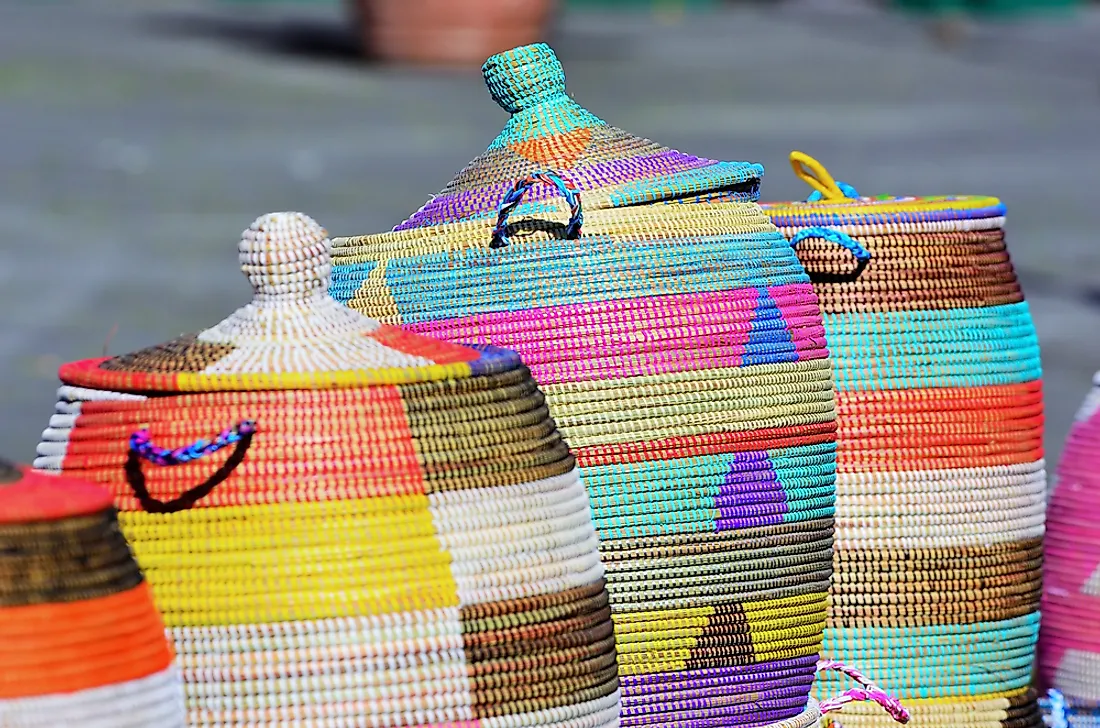The Culture Of Angola

- Angola is home to a great diversity of ethnic groups including the Ovimbundu, Kimbundu, Bakongo, and other people.
- Angolan culture is mostly native Bantu, which was mixed with Portuguese culture.
- Angola's culture can be seen as a product of the country's tumultuous past.
Angola is an African country located in the south-central part of the continent with a coastline on the Atlantic Ocean to the west. Angola houses a population of around 30,355,880 inhabitants. Angola is home to a great diversity of ethnic groups including the Ovimbundu, Kimbundu, Bakongo, and other people. Portuguese is the official language of the country. Other languages spoken in Angola include the Umbundu, Kikongo, Kimbundu, Chokwe, etc. Most of Angola’s population adheres to Christianity. Roman Catholics represent around 41.1% of the population while Protestant Christians account for 38.1% of the population.
5. Cuisine In Angola
The cuisine of Angola is significantly influenced by the cuisines of its diverse ethnic communities as well as Portuguese cuisine. Rice, flour, beans, chicken, fish, and pork are the staples of the diet. Vegetables like tomatoes, onions, okra, and sweet potatoes are also widely consumed. Funge is a common dish in Angolan cuisine. It is a type of porridge that is served with chicken, beans, fish, or pork. Muamba de galinha is a chicken preparation using palm paste, palm oil hash, garlic, and okra. Rice is consumed with vegetables, fish, or chicken. Cabidela is a dish cooked in blood (usually chicken) and is served with rice and funge. Onion, vinegar, garlic, and tomatoes are added to the dish to enhance the flavor. Fish stews, fried caterpillar, yellow coconut pudding, peanut candy, etc., are also popular Angolan dishes. A number of beverages are typical to the country like the Mongozo (a traditional homemade palm nut beer) and homemade spirits (using bananas, maize, potato, and cassava skin, etc).
4. Literature And The Arts In Angola
Written literature in Angola traces its origin to the mid-19th century. The colonial rule and the work of Christian missionaries in Angola supported the development of written literature in the country. Prior to that, Angolan literature was predominantly in the oral form. Each ethnic group had its own set of folk tales and legends, heroic epics, stories of wars, etc., that were passed down through the generations by word of mouth.
Angola's varied ethnic communities also have their own unique artistic skills. The wooden masks and sculptures of the country are known for their beauty. Ceramic pottery, bronze handicrafts, etc., are also produced in Angola.
3. Performance Arts In Angola
Angolan music is influenced by its indigenous folk music as well as Portuguese music. The capital city of Luanda is home to a diverse group of music and dance styles like semba, kuduro, zouk, kizomba, etc. Semba is the predecessor of various music and dance styles originating in Africa including samba itself. The versatility of semba can be understood from the fact that it is part of both celebrations and funerals in the country. Another style of music called the rebita originated in the Ilha do Cabo island of Angola. It is closely related to semba and is inspired by European line dances.
2. Sports In Angola
Angola’s most popular sport is basketball. The national team of the country has won the AfroBasket 11 times in the past. The team has also participated in the FIBA World Cup games and the Olympic Games. Angola’s national football team has won several international competitions and even qualified for the 2006 FIFA World Cup. Handball and hockey are also played in the country which has national teams in both the games.
1. Life In The Angolan Society
Despite efforts made by the Angolan government to erase gender inequality, Angolan society still discriminates on the basis of gender. Only a small percentage of women (around 28%) are literate while about 56% of the men are literate. Most of the higher ranks in politics, business, military, etc., are held by men. Women often receive lower pay than men. Violence and rape against women are high in the country. Most women remain in rural areas to manage the household, children, and agricultural duties. Most men flock to urban areas in search of work.
Marriages in Angola are either arranged or based on individual choice. However, couples are often forced to live apart due to the desperate economic situations. Men often leave the home to work in the towns and cities or abroad. Death rates are high among men and hence the population has a significant number of widowed women who are forced to work hard to sustain themselves and their children. Due to the gender imbalance, more women of marriageable age exist than men. Therefore, polygamous marriages are not uncommon. Weddings either take place in the church or are informal in nature.
Many Angolan households have been disrupted by war. A large section of the population, especially young men, have died. Many families are left without young men and are headed by women who struggle to make a living. Extended families are common in the villages where those employed often support the unemployed members of their extended family. Nuclear families are, however, more common in urban areas due to the space restrictions. Inheritance is usually patrilineal in nature. Children are brought up by their mothers while other members of the household, usually grandparents and older siblings, also help in childcare.
Widespread poverty and war prevent many Angolan children from going to school. Dropout rates are also high. Many children of school going age are forced to work to earn money.











